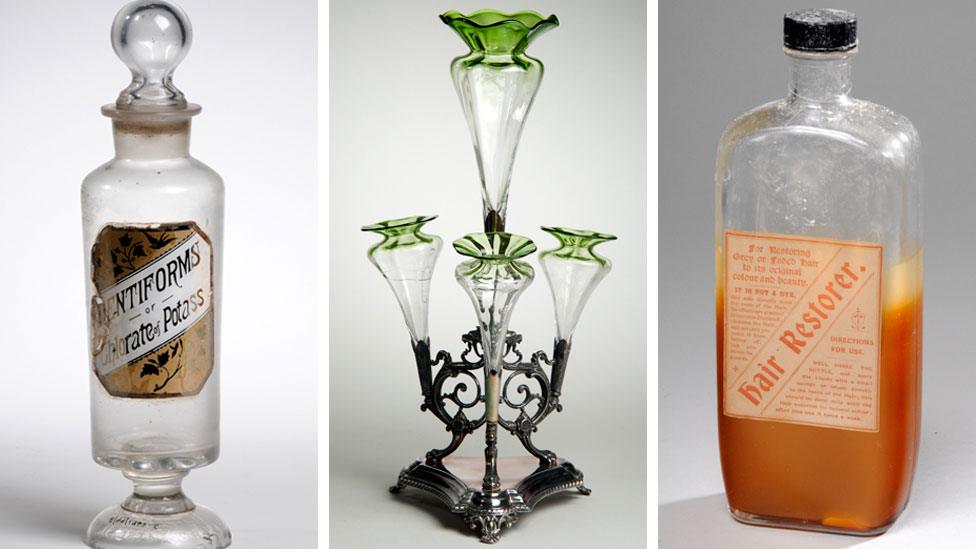Arsenic: Ceredigion church finds deadly chemical under wall paint
- Published
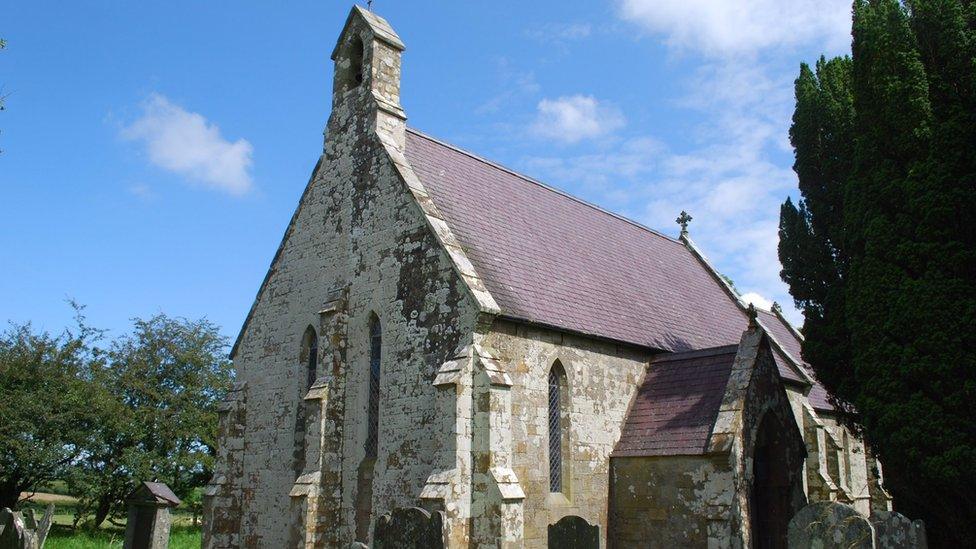
The serene exterior of St Michael's Church concealed the once "deadly" chemical
It looked a picture of serenity, so conservationists were surprised to discover "deadly" arsenic on the walls of a Grade II* listed church.
The chemical - infamous for its poisonous qualities - was found in St Michael's Church in Tremain, Ceredigion.
Tests have found it had been "rendered inert" by layers of paint and limewash.
However, researchers for Friends of Friendless Churches said they "won't be sanding down the walls any time soon".
The organisation, which works to save disused places of worship, said in a tweet, external that "to all the world St Michael's is a peaceful, lichen-speckled church".
But research of paint in the chancel walls "revealed this deadly green lurking under the limewash".
The charity, which has been bringing the church back to life since 2013, said those restoring it looked at a sample under a microscope and found a "rich, dark green paint" under the layers of lighter green and white.
Allow X content?
This article contains content provided by X. We ask for your permission before anything is loaded, as they may be using cookies and other technologies. You may want to read X’s cookie policy, external and privacy policy, external before accepting. To view this content choose ‘accept and continue’.
The history of arsenic in paint and wallpaper
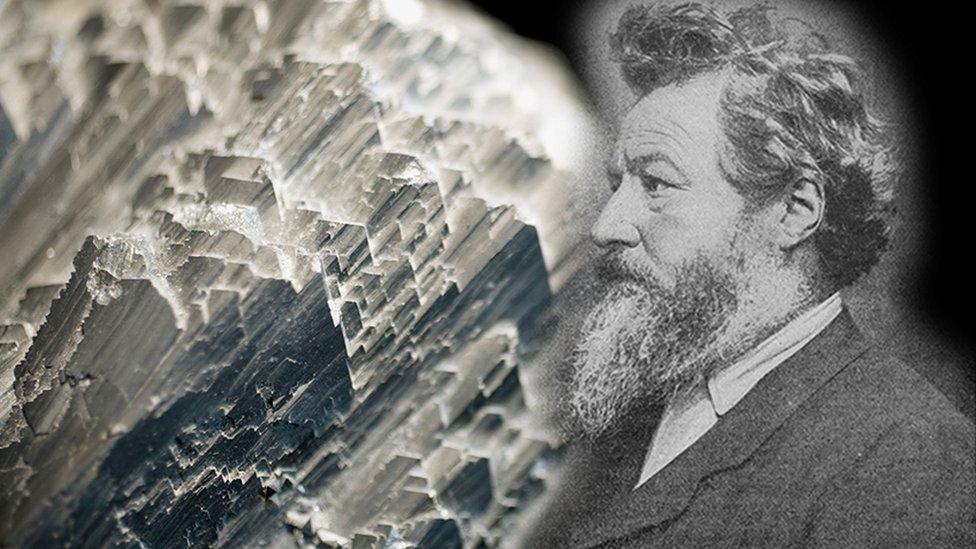
The firm founded by key arts and crafts thinker William Morris was involved in controversy with arsenic
Some popular pigments of green developed in the 18th and 19th Centuries and used in paints and wallpapers were made using arsenic, when its toxicity was the subject of debate.
Furnishings and decorative arts manufacturer Morris & Co, founded by William Morris, used large quantities of arsenic in their dyes - particularly for the greens in wallpaper.
In the 1860s, when a number of child deaths were attributed to wallpaper, William Morris refused to accept they had been poisoned.
Eventually, he bowed to public pressure and began to produce wallpaper that was advertised as "arsenic-free".
Arsenic was also used as a preservative by Victorian taxidermists, as well as in face powders and cleaning products of the era.
It was previously thought French Emperor Napoleon Bonaparte died in 1821 as a result of poisoning from arsenic, external in the wallpaper of his room while he was exiled on St Helena, but research has since refuted this theory with analysis suggesting he died of cancer, external.
Architectural paint researcher and conservator Phillipa McDonnell of Lincoln Conservation, at the University of Lincoln, said it was not unusual for toxic materials to appear in historic paints, including lead and mercury.
She said arsenic fell out of use when new shades of green came into fashion and there were developments in the paint and pigment industry.
"Every time we see a wallpaper with a specific green, we're almost always like 'this is probably arsenic and let's not touch that' or 'let's see what's in there'," she said.

'Rare' in churches
St Michael's Church, which was designed by architect John Jones and built on the site of an earlier church in the 19th Century, was granted Grade II* listed status in 2009.
Rachel Morley, director of Friends of Friendless Churches, said the discovery of the arsenic happened two years ago but they decided to tweet about it recently while preparing the church for work on the floor and pews.
The charity looks after about 60 churches across England and Wales though this was the first time it had found the chemical.
"When it was a new product it would have been more expensive, so for churches it was probably quite rare," she said.
"But this church [St Michael's] was heavily remodelled around that time so obviously they wanted to look quite extravagant."
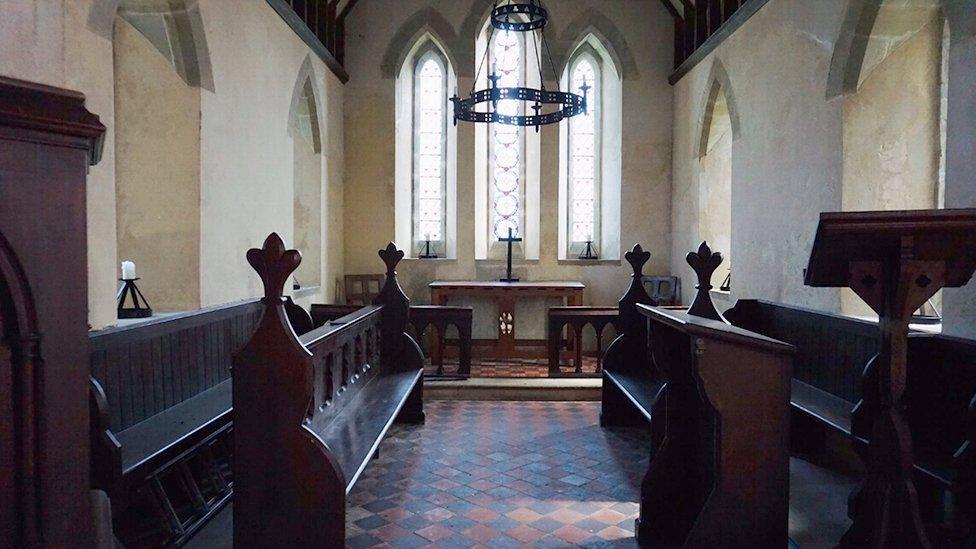
Work is being done on the St Michael's floor and pews
After the green layer in the church was discovered in the chancel, an assessment was carried out on the paint and layers of plaster.
"The specialists concluded that the arsenic green, fully covered by later layers of oil paint and limewash was rendered inert, and the building was safe," Friends of Friendless Churches said.
"It's all safe in the church now, but we will monitor the condition of the paint and plaster for any peeling, flaking or failures."
Related topics
- Published8 December 2019
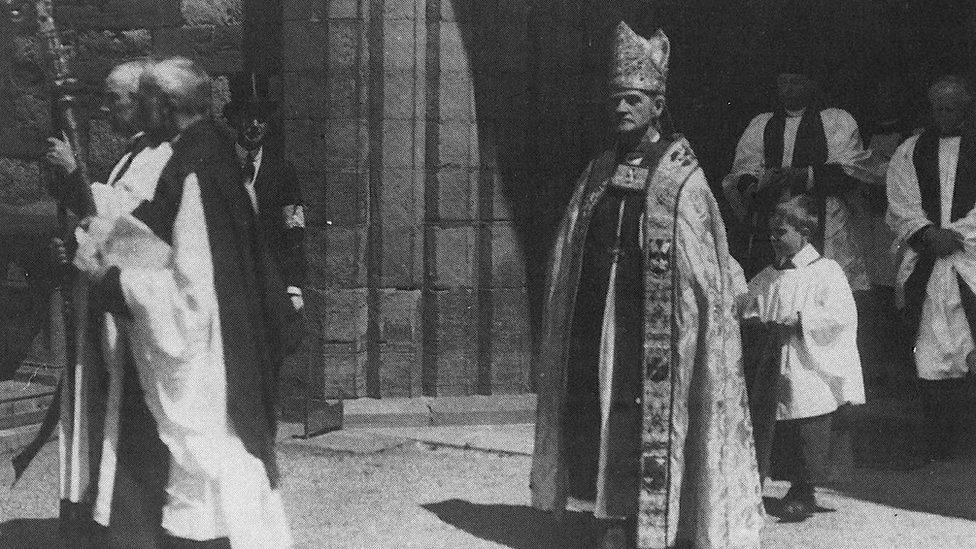
- Published16 August 2016

- Published26 January 2019
